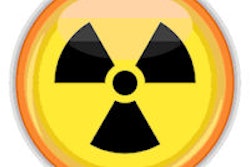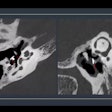Dear AuntMinnie Member,
When community-based radiation therapy centers saw their Medicare reimbursement slashed in 2013, they raised a storm of protest. But a new study presented at this week's American Society for Radiation Oncology (ASTRO) meeting hints at why they may have been targeted: Costs were much higher for patients treated at these centers than they were for patients treated at hospital-based departments.
Researchers from the University of San Diego, California analyzed how much costs varied in the provision of radiation therapy services, and they looked at whether the variance was due to patient- or disease-related factors, or due to provider-related factors such as the location and type of radiation oncology center.
Costs tended to vary much more based on the location and type of radiation therapy provider, compared with variation due to patient-related issues, the researchers found. The findings suggest inefficiency in radiation therapy services -- an inefficiency that Medicare may have been targeting when it changed reimbursement rates.
Read more about the study by clicking here, or visit our Imaging Leaders Digital Community at leaders.auntminnie.com.
US beats CT for kidney stones
As clinicians look for ways to substitute other types of imaging exams for radiation-bearing CT, a new study in the New England Journal of Medicine suggests that ultrasound could be the best modality when starting to work up patients with kidney stones.
Researchers at the University of California, San Francisco found that using ultrasound first -- and using CT only in patients who needed further workup -- resulted in no difference in complications or adverse events, while cutting radiation dose dramatically, as many patients never got CT at all.
Learn more about the study by clicking here, or visit our Ultrasound Digital Community at ultrasound.auntminnie.com.
PET/CT for breast cancer
Finally, PET/CT can benefit younger women who have aggressive stage II breast cancer, according to a new article we're featuring in our Molecular Imaging Digital Community.
A group from Memorial Sloan Kettering Cancer Center used PET/CT in a group of women younger than 40 who had an initial diagnosis of stage I to stage IIIC breast cancer. They found that 10% of the women with stage I or II disease actually were stage IV, and they also found distant metastases in 17% of stage IIB patients.
Read more by clicking here, or visit the community at molecular.auntminnie.com.



















